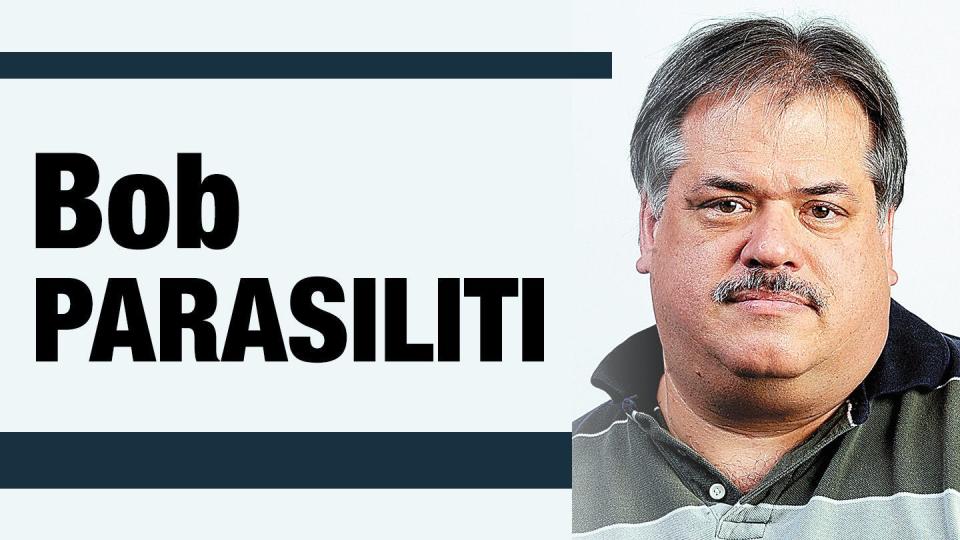Unified Sports is an example of being able to work, play and exist together

It’s the buzzword of our times.
Everywhere we turn, the term “inclusion” is prevalent around every corner.
The concept has been around forever, becoming a minefield to navigate during our present state of social revolution.
And where you find inclusion, both diversity and equality are listed alongside.
No doubt, there is much work to be done to reach the level and meet the demands of every group working to elbow to the forefront — or just on the same stage as others.
No dispute here. Not out to start any arguments or attacks about this volatile subject.
This is just an observation.
The notion of inclusion has been around a lot longer than most everyone realizes. It’s been here for years in different forms with different issues.
Togetherness: Unified bocce brings together students in spirit of competition for county championship
Photos: Washington County Unified Sports Bocce Championship
One form of inclusion that’s been battled for many years — and is just really turning the corner — is the version dealing with special education.
The special education movement — now more commonly known as special-needs — began to ramp up in the late 1980s.
It began with the Rehabilitation Act of 1973, which provided civil rights and accessibility to disabled students in schools.
All this came about when I was in school. I can remember the introduction of special-needs students in my school.
It was an uncomfortable time. Many of us didn’t know how to approach our new classmates.
And you know how that goes. Anything you are afraid of or is different, you avoid it.
Back then, the special-needs kids had a bubble around them because we all stood clear of them.
A number of today’s groups seem to know how that feels.
Fast forward today, some 46 years after I graduated from high school, and things are starting to enlighten.
The advancement — with some kicking and screaming involved — has become more accepted.
On the athletic front, it has come in the form of Unified Sports, an initiative adopted by Special Olympics, aimed at blending ways for special-needs and able-bodied athletes to compete together in an act of inclusion.
The concept grew from an idea of introducing the two groups to each other to find a way to provide the special-needs students an opportunity to experience the pride of wearing and representing their school colors.
There has been progress, but it’s been slow.
Maryland adopted Unified Sports just over a decade ago. It provided a slow evolution of three sports — tennis, bocce and track & field — allowing special-needs athletes to compete with the help and partnership of able-bodied counterparts.
The latest local example of this came on Saturday before a packed crowd at South Hagerstown. Six of the county’s public high schools fielded multiple teams for a bocce tournament.
Bocce is a form of lawn bowling that is wildly successful because it provides an even playing field and competition.
The special-needs’ athletic “inclusion” is still moving slowly, though.
Maryland is one of only five states with Unified Sports, the farthest south next to three New England states (Connecticut, New Hampshire, Rhode Island) and Arizona.
Other states, such as North Carolina, have initiatives brewing to join the movement.
In Maryland, once it was accepted, the special-needs and able-bodied students found out there is a bond and an acceptance for each other. In fact, they have been good for each other.
And in the process, the bubble wrap that was around the “disabled” from the 1970s has begun to disappear.
With that, these kids have rooted some harmony. Sure, it's not perfect, but it’s a start.
Through Special Olympics and the diligence of some educators, the needle is moving some.
As the Special Olympics website states, “Training together and playing together is a quick path to friendship and understanding.”
Fast forward to today’s issues. I’m no sociologist, but it’s obvious a pickup basketball game isn’t going to settle anything.
But, finding an avenue to create some common ground might help. Even the chicken crossed the road to get to the other side.
According to globaldiversitypractice.com, “In simple terms, diversity is the mix and inclusion is getting the mix to work well together.”
The site goes on to say “openness to diversity widens our access to engage talent effectively. Together, this leads to enhanced innovation, creativity, productivity, reputation, engagement and results.”
Right now, everyone in the world is standing up, yelling about what they want, what they should have and what they demand.
And they want it now. And to be honest, all this equality and diversity has been a long time coming.
Nobody is going to change minds by browbeating. It’s going to take more time — unfortunately — and open lines of communication to get anything done.
It won’t be easy. Everyone well knows nothing — including minds and perceptions — changes overnight.
Thanks to similar discussions, it’s allowed a bunch of special-needs kids to find equal footing with varsity jocks in high school.
This article originally appeared on The Herald-Mail: Parasiliti: Special-need athletes waged their own battle for inclusion

